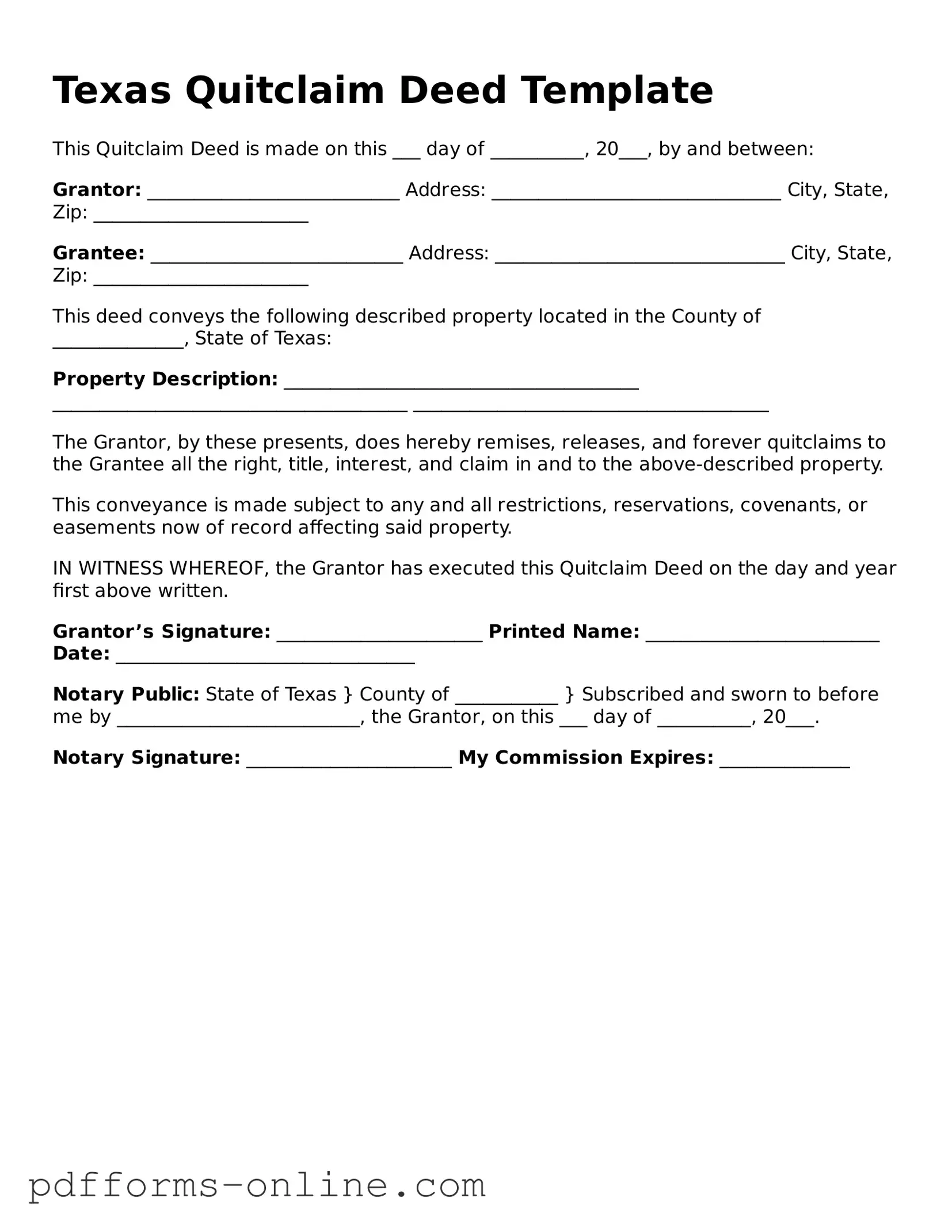Texas Quitclaim Deed Template
This Quitclaim Deed is made on this ___ day of __________, 20___, by and between:
Grantor: ___________________________
Address: _______________________________
City, State, Zip: _______________________
Grantee: ___________________________
Address: _______________________________
City, State, Zip: _______________________
This deed conveys the following described property located in the County of ______________, State of Texas:
Property Description:
______________________________________
______________________________________
______________________________________
The Grantor, by these presents, does hereby remises, releases, and forever quitclaims to the Grantee all the right, title, interest, and claim in and to the above-described property.
This conveyance is made subject to any and all restrictions, reservations, covenants, or easements now of record affecting said property.
IN WITNESS WHEREOF, the Grantor has executed this Quitclaim Deed on the day and year first above written.
Grantor’s Signature: ______________________
Printed Name: _________________________
Date: ________________________________
Notary Public:
State of Texas }
County of ___________ }
Subscribed and sworn to before me by __________________________, the Grantor, on this ___ day of __________, 20___.
Notary Signature: ______________________
My Commission Expires: ______________
